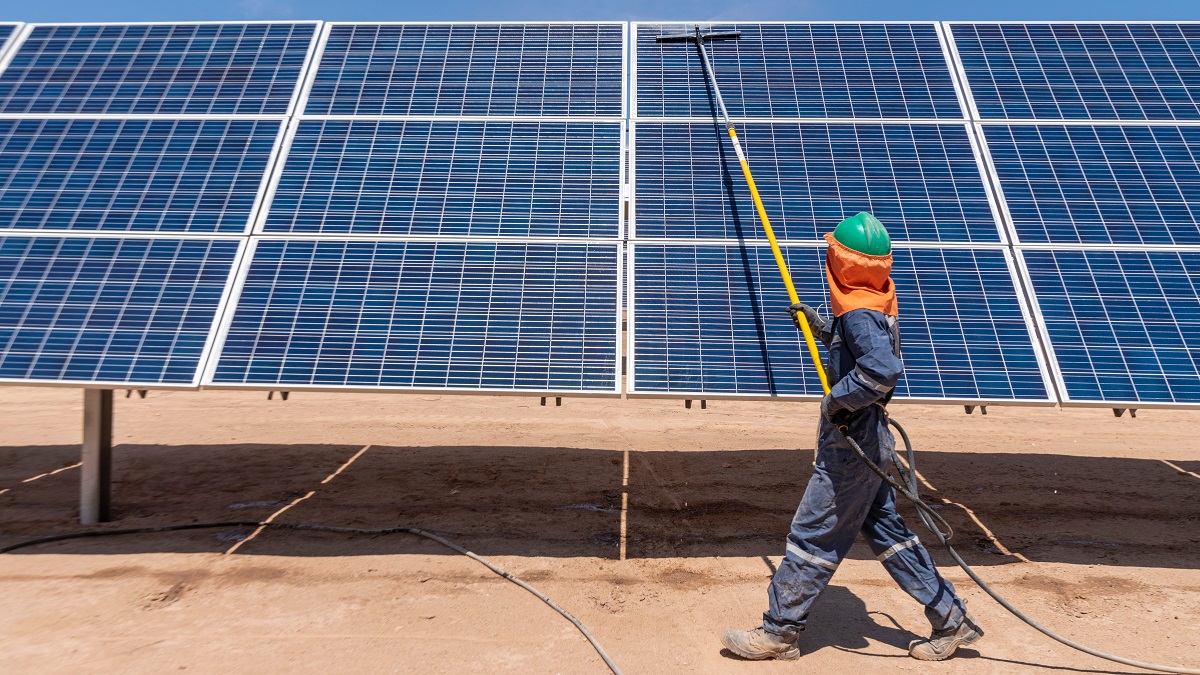
Could artisanal miners help bridge the critical mineral funding gap?
If the large global mining companies are not investing enough in critical minerals, do we need to think more laterally? Could artisanal miners (ASM) help bridge at least part of the gap, and maybe bring production on stream faster?
If the large global mining companies are not investing enough in critical minerals, do we need to think more laterally? Could artisanal miners (ASM) help bridge at least part of the gap, and maybe bring production on stream faster?
No, it's not easy. And it needs new skills and a different way of working. But Plan A isn't delivering.
This slightly left field thought came from Rob Karpati, at The Blended Capital Group. Given how quickly the supply/demand imbalance in critical minerals is growing, maybe we need some innovative thought and new approaches.
This is a What Caught Our Eye story - highlighting reports, research and commentary at the interface of finance and sustainability. Things we think you should be reading, and pointing out the less obvious implications. All from a finance perspective.
It's free to become a member ... just click on the link at the bottom of this blog or the subscribe button. Members get a summary of our weekly posts, including What Caught Our Eye and Sunday Brunch, delivered straight to your inbox. Never miss another blog post !
Artisanal mining is strategic for the energy transition.
From Rob Karpati - The Blended Capital Group
A variety of minerals are needed to transition to the clean energy solutions that will replace today’s carbon emitting technologies. These minerals, which have come to be called ‘critical minerals’, are generally in short supply, with looming shortages that risk delaying the path to net zero combined with geopolitical rivalries between the US/UK/EU on the one hand and China/Russia on the other hand that complicate supply accessibility.
Many countries have created critical minerals sourcing strategies, given the strategic importance of clean energy security, combined with the risk that supply gaps will impede progress. Strategies range from in-country mining through to multi-regional approaches that are intended to deliver supply from often underdeveloped countries that happen to have meaningful reserves.
China has had a long-term disciplined approach for growing their mining and refining capacity, which has given them dominant positions on many minerals, while the US/UK/EU have now recognised the importance of this area and are focused on catching up on their own supply needs.
We don't seem to have enough investment
Growing supply starts with investment, but mining investors have not been funding the growth that is necessary. Using copper as an example, estimates are that the world will need to mine as much copper in the next 50 years as it has over the last 5,000 years. Wood MacKenzie estimates that annual investment of $23 billion is needed to fund this growth in supply, which is 64% higher than the average annual spend that we have seen over the last 30 years.
There is a gap, and this gap is significant for many critical minerals.

Could artisanal mining be part of the solution?
In this context, artisanal miners already produce material quantities of numerous critical minerals. In the DRC, artisanal miners produce 10%+ of the world’s cobalt. ASM also produces meaningful quantities of copper in many countries, estimated at 5% of global supply, along with manganese and numerous other critical minerals.
ASM is largely informal today, with miners lacking access to equipment and operating manually – this makes the sector a natural opportunity for productivity growth as funding is brought to bear.
Artisanal miners often share land concessions with large scale mining operations and are early indicators for exploration, where the work of ASM is a clue for large mining companies that significant reserves may exist.
Co-existence on land concessions that are inherently shared combined with the exploration benefits of artisanal miners mean that formalisation that results in stable predictable business relationships with large projects can amplify productivity opportunities for large mines along with actual growth in ASM-generated tonnage.
How could formalisation help?
Estelle Levin, founder of Levin Sources and a recognised global expert on artisanal mining, defines formalisation as ‘the transition toward organized and professionalised systems of production in and through which responsible business conduct and sustainable development are more feasible and desirable, and thus more likely.’
Transitioning miners to ‘organised and professionalised systems of production’ includes training, equipping, and shifting miners to good practices. Productivity is one of the results. Along with near-term benefits, organizing miners into coops, associations or companies supports sustaining the gains, as governance structures are put into place that allow for long-term stable processes.
Remembering that professionalization shifts miners from not being equipped toward being aptly equipped, and from inconsistent work practices toward consistent good practices, productivity can increase 2X, 3X or even 5X depending on the details.
How quickly can this happen?
Formalisation can be delivered in 12-18 months, which is also compelling relative to the 15+ years that it often takes to go from pre-exploration through to operations for a large copper mine as an example. Remembering that ASM already generates significant tonnage of many critical minerals, this means that formalisation can be highly strategic for growing global supply.
From the perspective of large-scale mining operations, supporting ASM professionalisation enhances their own productivity, partly given the link to exploration, but also given the fact that shifting from potential conflict toward a joint focus on productivity sets up win/win outcomes over time.
Artisanal mining is a largely untapped sector for growing productivity.
Remembering that geopolitical rivalries exist and that China has dominant mining and refining positions for most critical minerals, ASM formalisation support and engagement can also be geo-politically strategic, a mechanism for growing supply in areas where it has been untapped to date.
A responsible mining lens is a potential competitive advantage in this context, where companies with land concessions and investors who are focused on critical minerals can supply formalisation in ways that enhance social outcomes, while catalysing broader sustainable development and human rights adherence as stable business relationships take hold.
A win/win lens that adds local value is of course a natural starting point for building trust with artisanal miners that can lead to longer-term win/win growth in the dignity and productivity of work.
From the perspective of countries that understand the importance of critical minerals for energy security, artisanal mining is clearly a strategic option for growth and supply stability. Recognising that individual groups of miners are small scale by definition, there are millions of miners operating across dozens of countries, making formalisation support that is underlaid by clear responsible mining practices compelling.
From the perspective of mining and impact investors, similar logic holds true, as formalisation delivers enhanced dignity and productivity of work, or put differently, social impact combined with value from productivity.
Diversification and the role of patient capital
Understanding how risks can be managed by diversification across a portfolio of formalisation projects, combined with how patient capital can enjoy long-term value as productivity takes hold is the natural work of investment.
We must also remember that delivering productivity and enhancing the dignity of work of miners through formalisation is not an imposed process. Formalisation is effective when it starts with the voices of miners and communities that neighbour mining, resulting in designed solutions that make local sense given concerns and realities that are inherently local. This work takes significant expertise, where a mindset grounded in flexible frameworks supports locally apt engagements.
The Blended Capital Group and the partners in our consortium see ASM as a strategic opportunity. We know that investment delivered at scale can be game changing on local dignity and productivity of work, which translates into commercial realistic critical mineral supply that is highly strategic as the energy transition continues to gain momentum.

Please read: important legal stuff.


